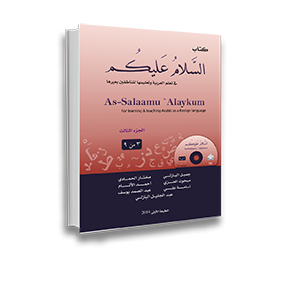After completing this textbook, the learners will be able to:
1. Initiate and understand native speakers in daily situation (informal invitations, visiting sports club, likes and dislikes of things and activities, vacations, daily routines, visiting a doctor, and religious and national occasions and comparing them with their cultures), and acquire sufficient vocabulary, and phrases to interact in such conversations.
2. Acquire vocabulary related to occupations, comparative and superlative adjectives, vocabulary of body parts and popular diseases that help learners express themselves to the doctor.
3. Exercise all pronouns in present, past, and future tenses spoken and written.
4. Exercise demonstrative pronouns, relative pronouns, nominal and verbal sentences, the first three patterns of the ten patterns of Verbs.
5. Use bilingual dictionaries such as (Hans Weber).
6. Express their vacations in meaningful sentences spoken and written.
7. Exercise Naskh and Raqa’a writing styles.
8. Acquire cultural clues pertaining to Arabic cuisine, tourist attractions, religious and national occasions and to compare them to their culture.
9. Acquire new learning strategies such as interview preparation to be conducted with locals, interview recording to get teacher’s feedback, and expose themselves to authentic language on Arabic TV channels, Qur’an recitations, and Arabic music to pick up a few vocabulary and enjoy the language. Furthermore, learners will exercise exploration activities to places and areas surrounding them and present spoken and written summaries to their classmates and teacher.

